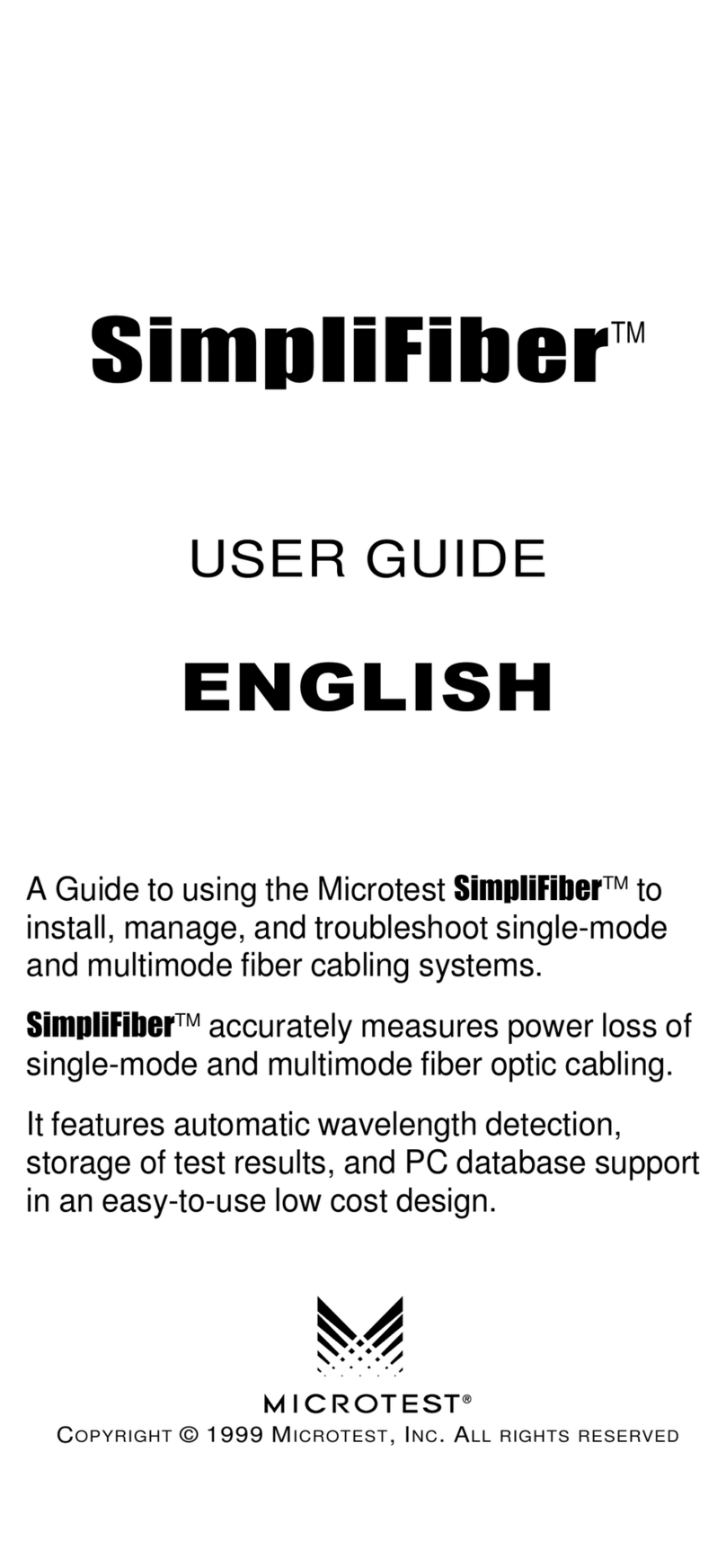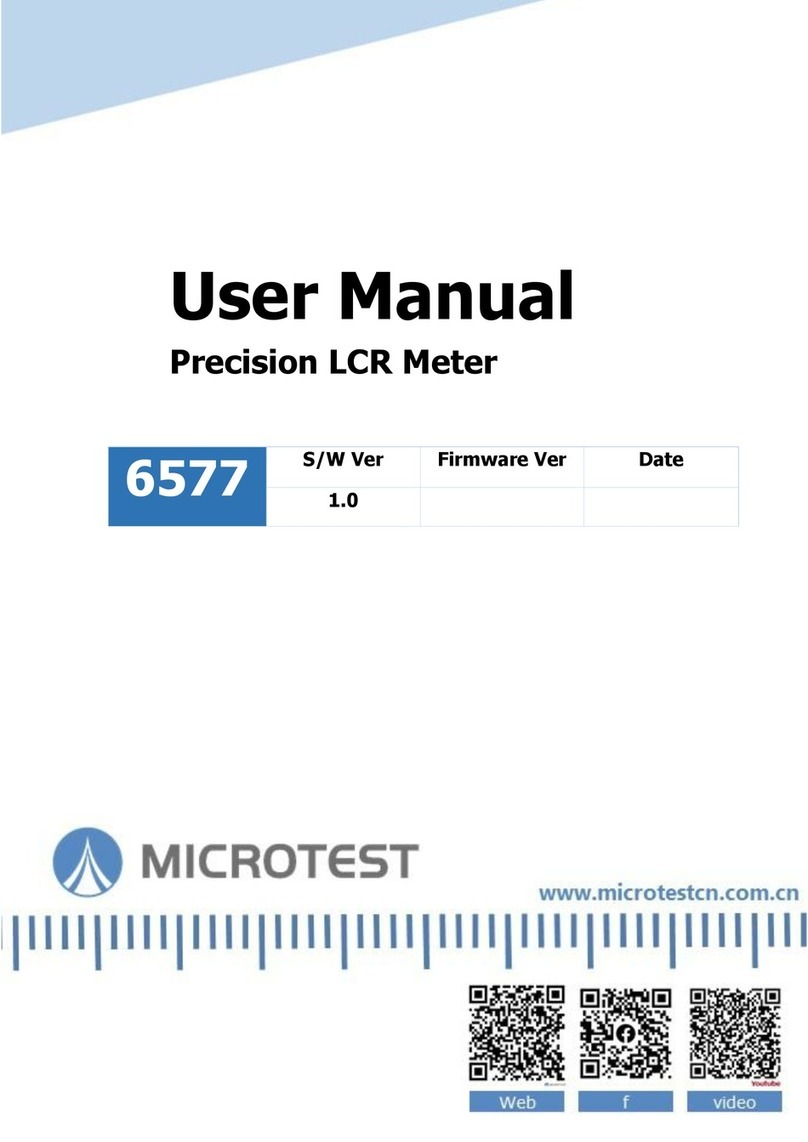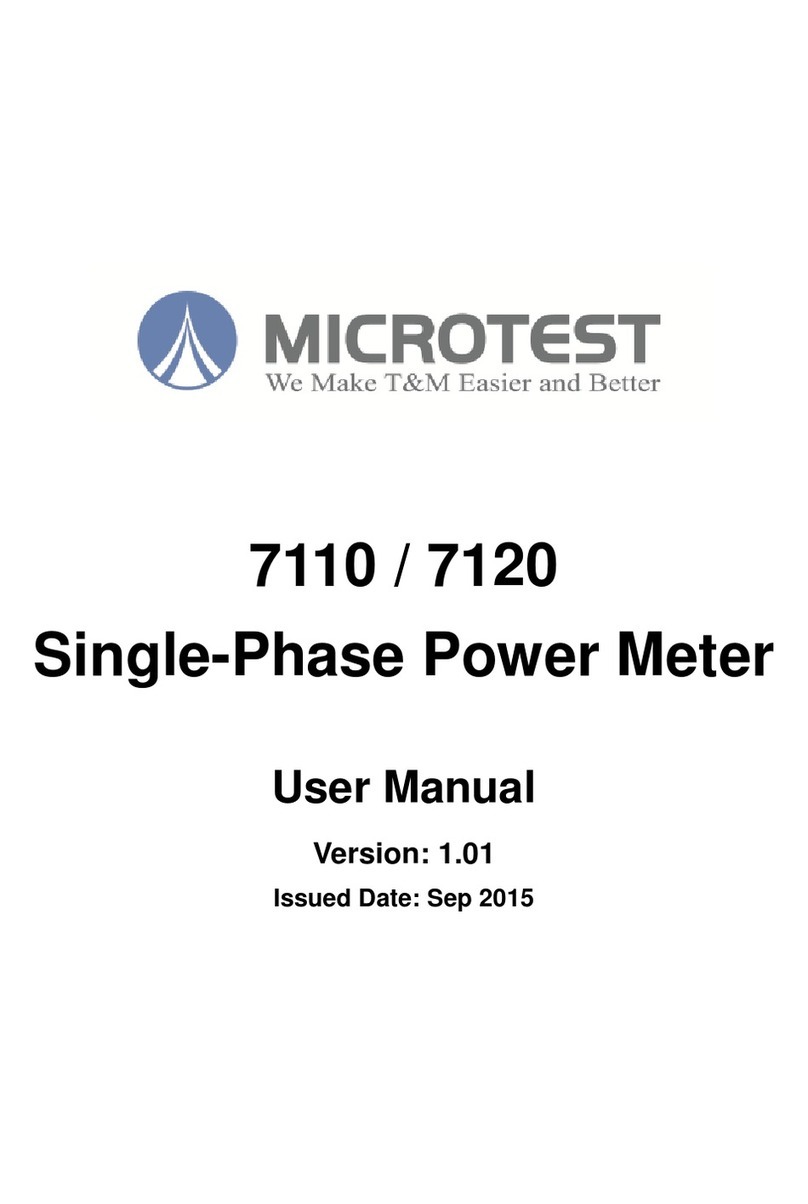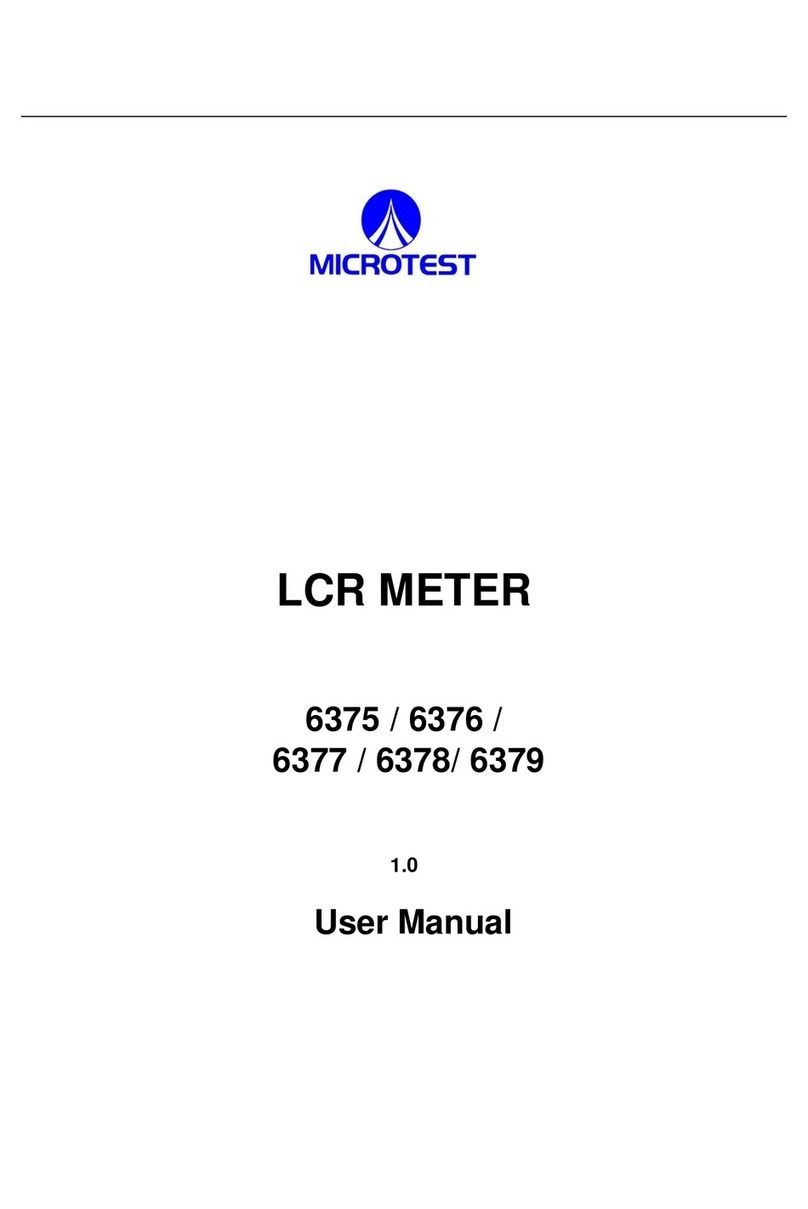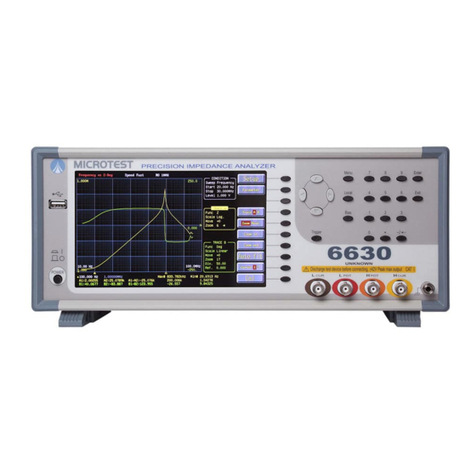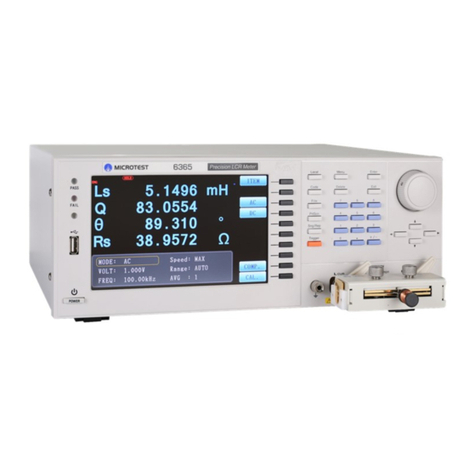4
2. Preface
In this chapter, we briefly introduce the characters, key features and specifications
of 6632 Precision Impedance Analyzer.
2.
2.1 Introduction
The test frequency of the 6632 Precision Impedance Analyzer is DC 10Hz-
30MHz and the test signal is 10mV-2Vrms (min. resolution 1mV), and is suitable
for the LCR and DCR testes of AC signals. The measurement in a continuously
changing environment can be executed stage-by-stage with the test frequency
and grade, and high-speed continuous tests can be performed under different
test and mode conditions. The machine also supports LAN, USB and GPIB PC
connection capabilities to improve the design and test efficiency significantly.
MICROTEST 6632 Impedance Analyzer also provides fixtures for material
dielectric permittivity measurement that allows PCB designed engineers to
reduce the faulty conditions with the comprehensive information of permittivity
while designing PCB layouts.
The performance, convenience and operation flexibility of the Precision
Impedance Analyzer have become indispensable tools for the professional
measuring technicians. In addition to providing full-range solutions for the testing
equipment over the past years, Microtest also developed the new model of
“6632 Precision Impedance Analyzer” that has contributed to more perfect
precision solutions for the test. Such analyzer can meet customer demands for
price, speed, capacity, accuracy and multi-function by its well-based flexibility in
combination and implementation. Therefore, it can be used in the testing of a
variety of components such as resister, capacitor, inductor, oscillator, sensor,
time-delay wire, filter and resonator.
2.2 Key Feature
Signal source frequency range: DC, 10Hz ~ 3/5/10/20/30MHz
Signal source grade: 10mV ~ 2V / 200μA ~ 20mA
Basic accuracy up to ±0.08% (Typical value ±0.05%)
ALC function
Output resistance 25Ω/100Ω, switchable
Wide resistance measurement range from 25 mΩ to 40
MΩ (measurement accuracy up to 10%)
Parameters: |Z|, |Y|, θ, R, X, G, B, L, C, D, Q, DCR, ESR, Vac, Iac, Vdc, Idc, etc.
Ultra-high measuring speed
Open circuit/short circuit/load calibration function
Electric meter mode, multistep list mode, scan & analyze mode
Up to four component parameters can be selected in the electric meter mode.
The induction and DCR values can be measured and displayed simultaneously
Auto component classification: Comparator function and Handler BIN
classification function
Up to 32 sets of multistep list programs can be stored in the permanent memory
and up to 16 test steps can be arranged in each program
Rapid automation and data access function is realizable for USB, LAN, GPIB
and RS232 interfaces
PC connection data analysis software is available optionally
7" 800*480 TFT LCD color screen












